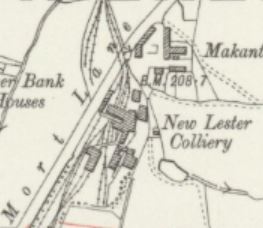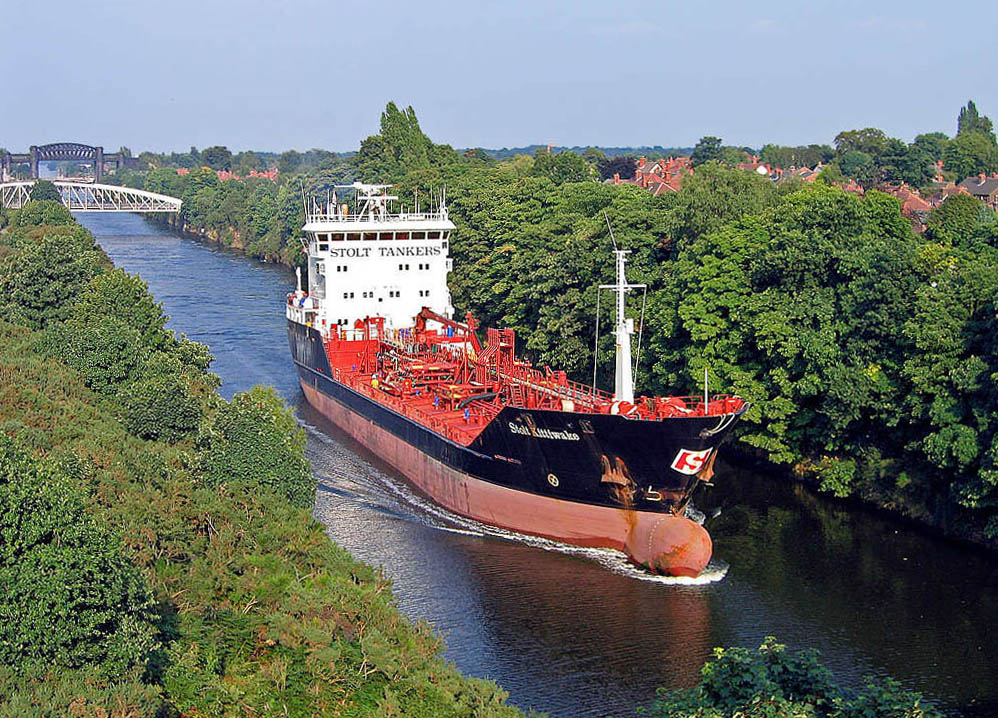

New Lester Colliery 1907.[1]
Reproduced with the permission of the National Library of Scotland
New Lester Colliery, on the Manchester CoalfieldPart of the Lancashire Coalfield. Some easily accessible seams were worked on a small scale from the Middle Ages, and extensively from the beginning of the Industrial Revolution until the last quarter of the 20th century., was opened by James and William Roscoe in Tyldesley, Lancashire, England. Its two shafts were sunk on the east side of Mort Lane near Makants, on the road to Little Hulton, where the Roscoes had sunk the Peel Hall and New Watergate pits. It was sunk in the late 1860s, and first recorded on the Mines List for 1867.[2]
The colliery exploited the Middle Coal Measures of the Manchester Coalfield, laid down in the Carboniferous period, and from where coal was mined from more than a dozen coal seams between the Crumbouke and Arley mines.[a]In this part of Lancashire a coal seam is referred to as a mine and the coal mine as a colliery or pit. The seams generally dip towards the south and west, and are affected by small faults; the Upper Coal Measures are not worked in this part of the coalfield.[3]
James Roscoe
James Roscoe worked as a miner in one of the old pits in North Lane, Astley before he moved to work on the railway in Leicester, where he became head of the locomotive department.[4] His home was Park House in Astley for ten years and Kenyon Peel Hall in Little Hulton, where he died in 1890; his partnership with William was dissolved in the 1870s.[2] Roscoe left the management of his colliery to his sons, Thomas and George,[5] who formed James Roscoe and Sons in 1892 and modernised the colliery.[2]
Collieries
During the late 1840s and early 1850s James and William Roscoe sank the New Watergate and Peel Hall pits, which were quite close together in Little Hulton.[6] James considered sinking a new deep pit in an area where there were many old shallow abandoned shafts in Mort Lane, Tyldesley.[4] In the late-1860s, in partnership with William Roscoe, he began the New Lester Pit, so named after Roscoe left Leicester to return to Tyldesley.[4] No 2 pit was 471 yards (431 m) deep and had a wooden trestle-type headgear.[7]
James Roscoe and Sons was formed by Thomas and George Roscoe in 1892 and remained in operation until 1938, when Peel Collieries took over.[2] New Lester’s shafts were deepened to access the Arley mine in the early 1890s, from which “Arley slack” – poor quality coal for industrial use – was mined. Although the colliery was small it had access to coal from the Yard, which was known here as the Denner Main, the Four foot, Cannel, Plodder and Three Quarters mines.[8] In 1939 the colliery employed 499 men underground and 169 surface workers,[9] but three years later just 15 men underground and 13 on the surface;[6] the colliery was completely closed by 1947. The area of the coal workings was opencasted after the Second World War.[10]
Locomotives
At first coal from all Roscoe’s pits was moved using horses and carts, until the London and North Western Railway built the Little Hulton mineral branch line in 1874. It was connected to the Lancashire and Yorkshire Railway’s Manchester to Southport Line at Peel Hall sidings, and a private line was built to New Lester in 1888.[2] Roscoe’s company bought Lord Kenyon, a six-coupled saddle tank from the Hunslet Engine Company in 1884, and in 1900 another saddletank, Mary. In 1907 it bought King Edward VII and in 1914 King George V, all from Hunslets. The locomotives resembled the Manchester Ship Canal Company’s engines
36-mile-long (58 km) inland waterway in the North West of England linking Manchester to the Irish Sea. in being able to negotiate the mineral line’s sharp curves.[11]
